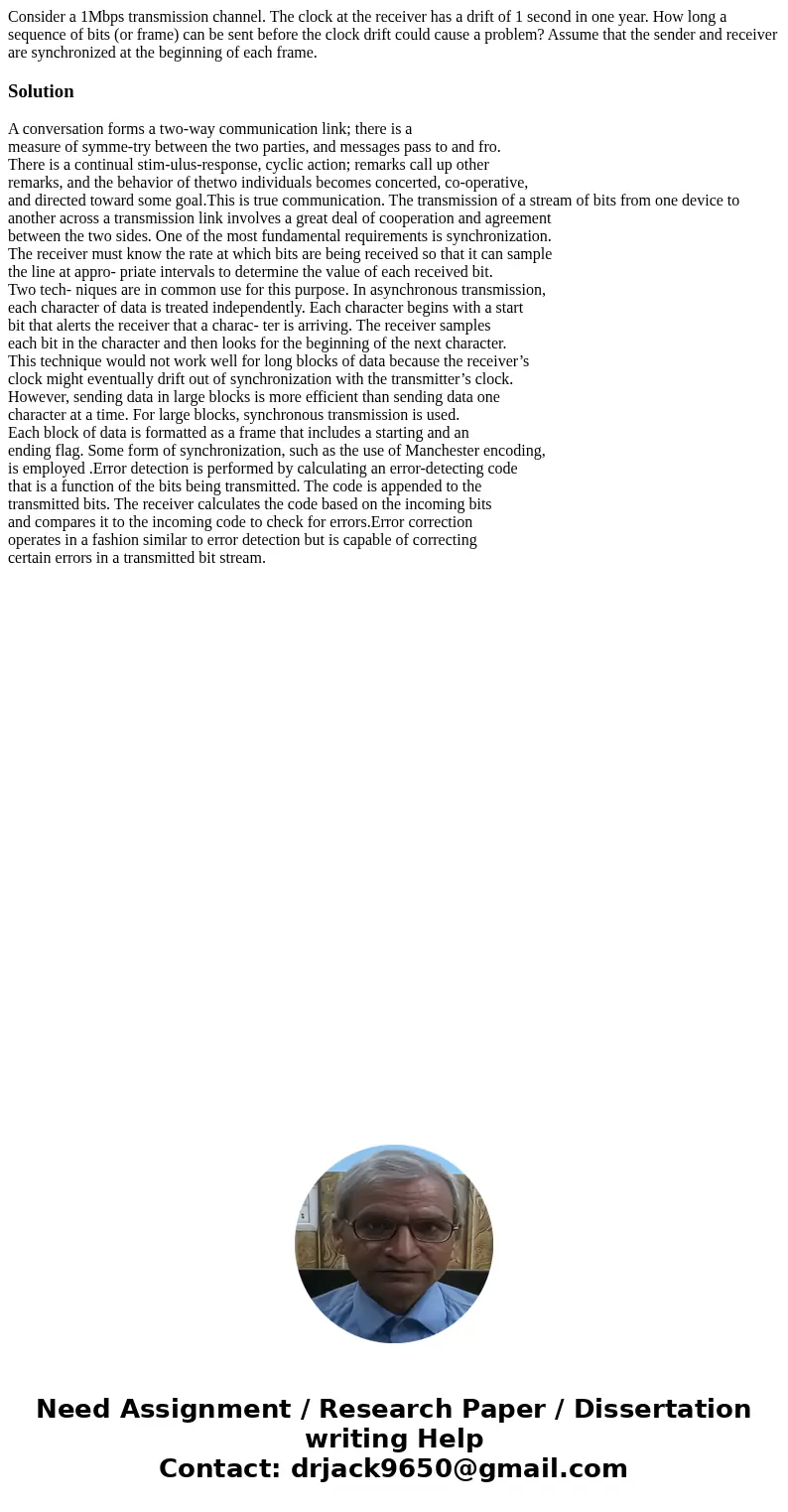Consider a 1Mbps transmission channel The clock at the recei
Consider a 1Mbps transmission channel. The clock at the receiver has a drift of 1 second in one year. How long a sequence of bits (or frame) can be sent before the clock drift could cause a problem? Assume that the sender and receiver are synchronized at the beginning of each frame.
Solution
A conversation forms a two-way communication link; there is a
measure of symme-try between the two parties, and messages pass to and fro.
There is a continual stim-ulus-response, cyclic action; remarks call up other
remarks, and the behavior of thetwo individuals becomes concerted, co-operative,
and directed toward some goal.This is true communication. The transmission of a stream of bits from one device to
another across a transmission link involves a great deal of cooperation and agreement
between the two sides. One of the most fundamental requirements is synchronization.
The receiver must know the rate at which bits are being received so that it can sample
the line at appro- priate intervals to determine the value of each received bit.
Two tech- niques are in common use for this purpose. In asynchronous transmission,
each character of data is treated independently. Each character begins with a start
bit that alerts the receiver that a charac- ter is arriving. The receiver samples
each bit in the character and then looks for the beginning of the next character.
This technique would not work well for long blocks of data because the receiver’s
clock might eventually drift out of synchronization with the transmitter’s clock.
However, sending data in large blocks is more efficient than sending data one
character at a time. For large blocks, synchronous transmission is used.
Each block of data is formatted as a frame that includes a starting and an
ending flag. Some form of synchronization, such as the use of Manchester encoding,
is employed .Error detection is performed by calculating an error-detecting code
that is a function of the bits being transmitted. The code is appended to the
transmitted bits. The receiver calculates the code based on the incoming bits
and compares it to the incoming code to check for errors.Error correction
operates in a fashion similar to error detection but is capable of correcting
certain errors in a transmitted bit stream.

 Homework Sourse
Homework Sourse